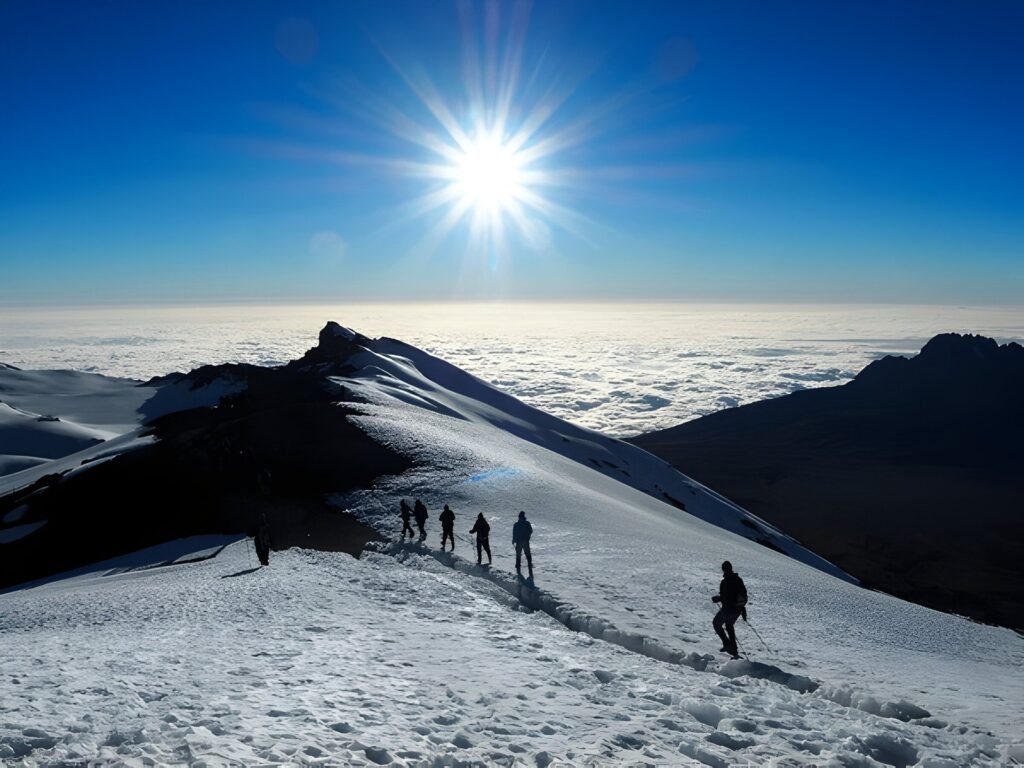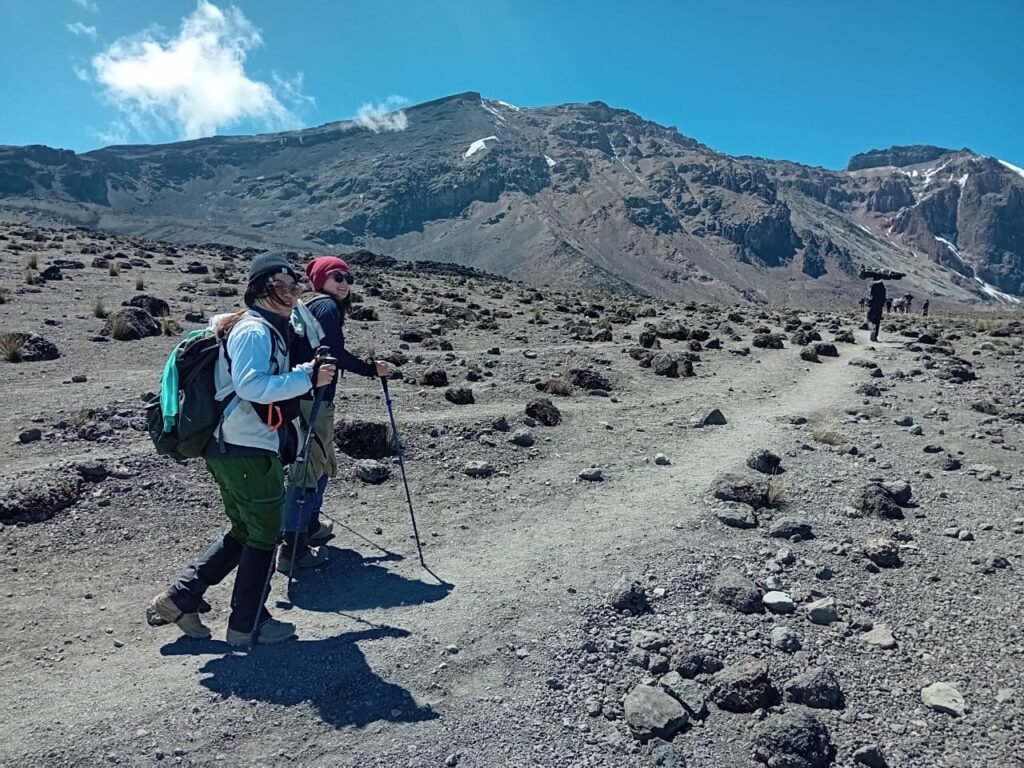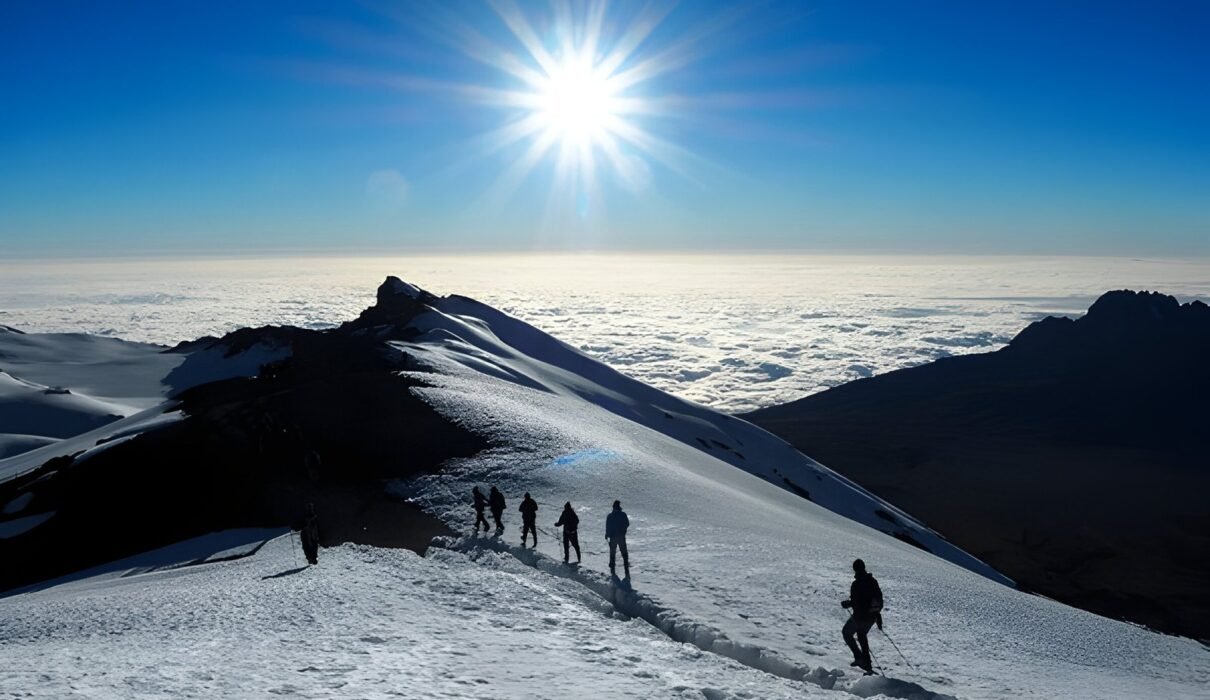How to Climb Kilimanjaro Sustainably and Responsibly . Climbing Mount Kilimanjaro is a bucket-list adventure for many travelers. As Africa’s highest peak, it offers a challenging yet rewarding experience. However, with thousands of people attempting the climb each year, it’s essential to think about the impact this tourism has on the environment and local communities. To preserve this majestic mountain for future generations, it’s crucial to adopt sustainable and responsible practices during your climb.
In this guide, we’ll explore how you can climb Kilimanjaro responsibly while minimizing your environmental footprint and supporting local communities.
Learn more about sustainable Kilimanjaro climbs.

How to Climb Kilimanjaro Sustainably and Responsibly : Choose an Ethical and Eco-Friendly Tour Operator
One of the most important decisions you’ll make is selecting the right tour operator. Ethical operators not only ensure the safety of their climbers but also prioritize environmental conservation and fair treatment of local staff, such as guides and porters.
What to Look For in a Responsible Tour Operator:
- Porter Welfare: Choose companies that follow the Kilimanjaro Porter Assistance Project (KPAP) guidelines to ensure fair wages and proper treatment of porters.
- Environmental Practices: Look for operators that adhere to “leave no trace” principles and minimize waste on the mountain.
Discover why choosing an eco-friendly operator is important.
How to Climb Kilimanjaro Sustainably and Responsibly : Reduce Waste on the Mountain
Mount Kilimanjaro attracts over 50,000 climbers each year, which can lead to significant waste if not managed properly. It’s essential to be conscious of what you bring and how you dispose of waste during your climb.
Tips for Reducing Waste:
- Carry Reusable Items: Bring a reusable water bottle and avoid single-use plastics.
- Pack Out What You Pack In: Don’t leave any trash behind. Take everything back with you, including used batteries and packaging materials.
- Biodegradable Products: Use biodegradable soap, toothpaste, and other toiletries to avoid polluting the environment.
Learn more about waste management on Kilimanjaro.
How to Climb Kilimanjaro Sustainably and Responsibly : Use Eco-Friendly Gear
Choosing sustainable gear is another important aspect of climbing Kilimanjaro responsibly. Look for gear made from recycled or eco-friendly materials, and invest in high-quality products that will last for multiple adventures, reducing waste in the long run.
Essential Eco-Friendly Gear:
- Clothing: Choose sustainable outdoor brands that focus on recycled or organic materials.
- Water Filtration Systems: Instead of buying bottled water, bring a filtration system to purify water from local sources.
Check out sustainable gear options for outdoor adventures.
How to Climb Kilimanjaro Sustainably and Responsibly : Support Local Communities
One of the best ways to climb Kilimanjaro responsibly is to ensure that your trip benefits the local economy. This means supporting locally owned businesses, staying in locally run accommodations, and purchasing products made by local artisans.
Ways to Support Local Communities:
- Hire Local Guides: Opt for tour operators that employ local guides and porters, ensuring they receive fair wages and training.
- Buy Local Products: Purchase souvenirs and products directly from local communities instead of imported items.
Learn more about supporting local communities through responsible travel.
How to Climb Kilimanjaro Sustainably and Responsibly : Respect Wildlife and Nature
Kilimanjaro is home to a variety of wildlife, including colobus monkeys, leopards, and various bird species. While the chance to encounter these animals is exciting, it’s essential to respect their habitats.
How to Protect Wildlife:
- Observe from a Distance: Don’t approach or disturb wildlife. Maintain a safe and respectful distance at all times.
- Stick to Established Trails: Avoid trampling on vegetation or creating new trails, which can lead to soil erosion and habitat destruction.
Learn more about how to protect wildlife during your trek.
How to Climb Kilimanjaro Sustainably and Responsibly : Offset Your Carbon Footprint
Climbing Kilimanjaro requires significant travel, which contributes to carbon emissions. One way to mitigate this impact is by offsetting your carbon footprint. Many organizations offer carbon offset programs that allow you to invest in environmental projects that reduce carbon emissions.
Simple Steps to Offset Your Carbon Footprint:
- Calculate Your Emissions: Use an online calculator to estimate the carbon emissions from your flight and trek.
- Support Offset Programs: Invest in reputable carbon offset programs that focus on renewable energy, reforestation, or conservation efforts.
Learn more about carbon offset programs.
How to Climb Kilimanjaro Sustainably and Responsibly : Choose the Best Time to Climb for Sustainability
While Kilimanjaro can be climbed year-round, some seasons are more sustainable than others. The dry season, from June to October, is the most popular time to climb, but it’s also when the mountain sees the highest number of trekkers. To reduce your impact, consider climbing during the shoulder seasons, when fewer climbers visit the mountain.
Best Months for a Low-Impact Climb:
- Shoulder Seasons: Climb during March to May or November to December for a quieter and more sustainable experience.
Find out the best time to climb Kilimanjaro.
How to Climb Kilimanjaro Sustainably and Responsibly : Stay in Eco-Friendly Accommodations
Before and after your Kilimanjaro trek, consider staying in eco-friendly lodges or camps that prioritize sustainability. Many lodges around Kilimanjaro and in nearby towns like Moshi and Arusha offer environmentally responsible accommodations that support local communities and use renewable energy.
Eco-Friendly Stays:
- Use of Renewable Energy: Look for lodges that use solar power and sustainable water practices.
- Local Sourcing: Choose accommodations that source food and materials locally to support the surrounding community.
Explore eco-friendly accommodation options in Tanzania.
How to Climb Kilimanjaro Sustainably and Responsibly : Educate Yourself on Kilimanjaro’s Ecosystem
Understanding Kilimanjaro’s unique ecosystem will not only enrich your experience but also help you appreciate the importance of protecting this fragile environment. The mountain is home to several distinct climate zones, from rainforests to alpine deserts, each supporting different plant and animal species.
Why It’s Important:
- Biodiversity: Kilimanjaro’s ecosystems are vital for local wildlife and communities. Learning about them encourages responsible behavior during your climb.
- Conservation: The more you know about the mountain, the more you’ll understand the importance of conservation efforts to protect it.
Learn about Kilimanjaro’s ecosystem and biodiversity.
Spread the Message of Responsible Tourism
After completing your Kilimanjaro trek, share your experience with others and encourage them to adopt sustainable practices. By promoting responsible tourism, you can help preserve Mount Kilimanjaro for future generations.
Ways to Spread Awareness:
- Social Media: Share your experience and highlight the importance of climbing responsibly on platforms like Instagram, Facebook, and blogs.
- Word of Mouth: Encourage friends and family who plan to climb Kilimanjaro to choose eco-friendly operators and adopt sustainable practices.
Find tips on how to be a responsible traveler.

How to Climb Kilimanjaro Sustainably and Responsibly : Conclusion
Climbing Kilimanjaro sustainably and responsibly ensures that this beautiful mountain remains a haven for adventurers and wildlife alike. From choosing an eco-friendly tour operator to reducing waste and supporting local communities, small steps can make a big difference. Whether you’re preparing for your climb or reflecting on your experience, being mindful of your environmental impact will help preserve Kilimanjaro’s beauty for future generations.
For more information on sustainable Kilimanjaro climbs, visit Kilimanjaro Climb Specialist or Eddy Tours & Safaris.

